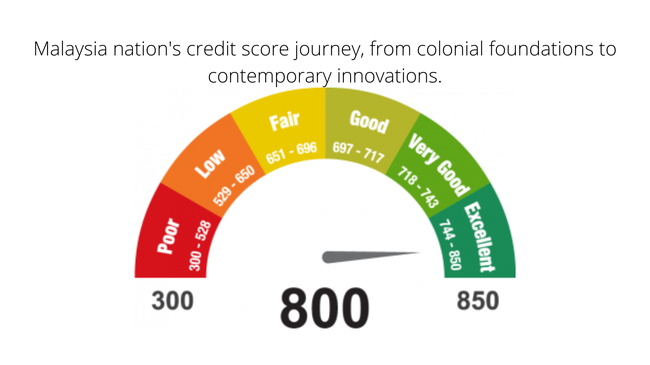Introduction
At the heart of Southeast Asia, Malaysia stands as a testament to a harmonious blend of diverse cultures, vibrant economies, and modern infrastructures. As a key player in the ASEAN economic community, its financial systems and practices are vital cogs that drive both local and international transactions. Among these practices, the credit scoring system, which fundamentally assesses the creditworthiness of individuals and businesses, plays a pivotal role. For those living in or planning to move to Malaysia, understanding this system is not just essential—it's imperative. In this article, we unravel the intricacies of Malaysia's credit scoring system, tracing its historical roots and exploring its current dynamics, ensuring you're well-equipped to navigate this crucial aspect of the nation's financial landscape.
Historical Framework and Context
The landscape of Malaysia's credit system has been shaped by a series of historical, socio-political, and economic influences that span over a century.
Colonial Foundations
During its time as a British colony, Malaysia inherited a banking system that was primarily based on British institutions and practices. This foundation, laid during the colonial era, played a pivotal role in molding the early financial landscape of post-independence Malaysia. Institutions that had their genesis during this period, such as HSBC and Standard Chartered, are still prominent players in Malaysia's banking sector.
Post-Independence Evolution
After gaining independence in 1957, Malaysia embarked on an ambitious path of economic growth and diversification. As the country sought to reduce its dependence on traditional sectors like tin mining and rubber plantations, there was a significant push towards industrialization. This shift necessitated a more structured and expansive credit system to facilitate industrial growth and consumer spending.
Banking and Financial Institutions Act 1989
Recognizing the need for a more robust and regulated financial sector, the Malaysian government enacted the Banking and Financial Institutions Act (BAFIA) in 1989. This legislation laid down the groundwork for modern banking practices in the country, including the regulation of credit reporting and the protection of consumers.
Rise of Credit Reporting Agencies
The late 20th and early 21st century saw the establishment and growth of Credit Reporting Agencies (CRAs) in Malaysia. These agencies, while functioning under the purview of Bank Negara Malaysia (the central bank), began collecting and disseminating credit-related information, laying the groundwork for the credit scoring system as we know it today.
Global Influences
As Malaysia continued to integrate with the global economy, especially post the 1997 Asian Financial Crisis, there was a concerted effort to align the country's financial practices with international standards. The credit system was no exception, undergoing reforms to ensure transparency, fairness, and efficiency in assessing creditworthiness.
How Credit Score Works in Malaysia
In Malaysia, the credit score is predominantly managed and disseminated by the Credit Reporting Agency (CRA). Here's a breakdown of its workings:
Credit Reporting Agency (CRA)
There are several CRAs in Malaysia, with Central Credit Reference Information System (CCRIS) being one managed by Bank Negara Malaysia. Other private CRAs include CTOS, RAM Credit Information, and Experian (formerly known as RAM Credit Information Sdn. Bhd.).
Scoring System
Credit scores typically range from 300 to 850. Various factors influence the score, including payment history, outstanding debts, the length of credit history, types of credit in use, and new credit applications.
Accessing Your Score
Individuals can obtain a free credit report annually from any CRA to understand their financial standing.
How to Access Credit?
Prerequisites
Identity Verification
This typically includes a National Registration Identity Card (NRIC) for locals or a valid passport for foreigners.
Proof of Income
Salary slips, tax returns, or other relevant documentation.
Employment Details
Depending on the type of credit, this can also be a key prerequisite.
Terms and Conditions
Interest Rates
They vary based on the type of loan and the lending institution.
Repayment Period
This can range from short-term loans to mortgages that last several decades.
Collaterals and Guarantees
Some loans, especially larger amounts, may require collateral or a guarantor.
Curiosities and Tendencies
Digital Transformation
Malaysia has seen a surge in fintech solutions, leading to more digital platforms offering credit services, often with quicker approval times and less stringent requirements.
Islamic Finance
Reflecting Malaysia's significant Muslim population, there's a notable emphasis on Sharia-compliant banking and credit services.
Financial Literacy Initiatives
The Malaysian government and NGOs are pushing for enhanced financial literacy, ensuring citizens understand credit scores and their implications.
Conclusion
As Malaysia continues its trajectory as a dynamic player in the Southeast Asian economic arena, understanding its credit system becomes even more vital. From its historical underpinnings to its modern-day intricacies, the credit landscape of Malaysia offers both opportunities and challenges. For locals and expatriates alike, a well-informed approach towards credit can pave the way for better financial decisions, stability, and growth in this vibrant nation.

